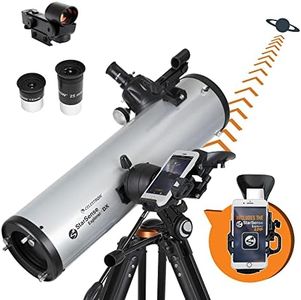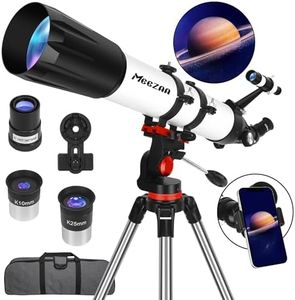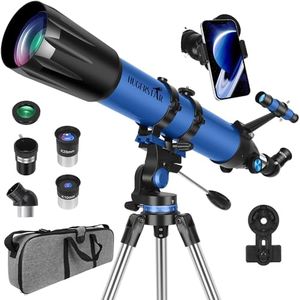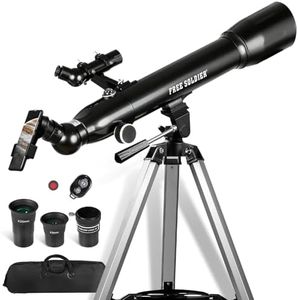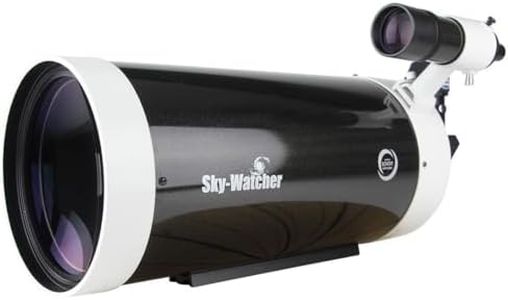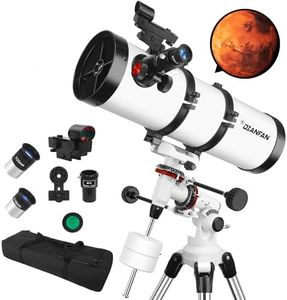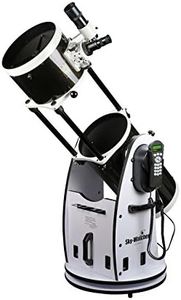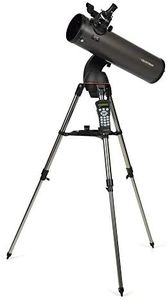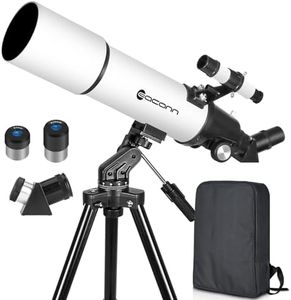10 Best Telescopes 2025 in the United States
Our technology thoroughly searches through the online shopping world, reviewing hundreds of sites. We then process and analyze this information, updating in real-time to bring you the latest top-rated products. This way, you always get the best and most current options available.

Our Top Picks
Winner
Gskyer Telescope, 70mm Aperture 400mm AZ Mount Astronomical Refracting Telescope for Kids Beginners - Travel Telescope with Carry Bag, Phone Adapter and Wireless Remote.
Most important from
22134 reviews
The Gskyer Telescope is an excellent choice for kids and beginners who are interested in exploring astronomy. With a 70mm aperture and 400mm focal length, it provides clear and bright images of the moon and stars. The fully coated optics ensure high transmission of light, enhancing image quality and protecting your eyes. The included 3x Barlow lens and two eyepieces offer versatile magnification options, making it easier to locate and observe celestial objects using the 5x24 finder scope. The Altazimuth mount allows smooth and simple movement, making it user-friendly for beginners.
The adjustable aluminum tripod and carry bag enhance its portability, allowing you to take it on your travels conveniently. The added smartphone adapter and wireless camera remote are great for capturing and sharing your celestial discoveries. While this telescope is highly rated and popular, its manual focus might require some practice to get right, and it’s designed mainly for casual star-gazing rather than advanced astronomical research.
Nonetheless, for its price point and ease of use, it's a solid entry-level telescope for those starting their journey into astronomy.
Most important from
22134 reviews
Celestron CPC 1100 StarBright XLT GPS Schmidt-Cassegrain 2800mm Telescope with Tripod and Tube
Most important from
120 reviews
The Celestron CPC 1100 is a powerful 11-inch Schmidt-Cassegrain telescope, offering excellent light-gathering ability thanks to its large 279mm aperture. This size allows for bright and detailed views of planets, the moon, and deep sky objects, making it suitable for both beginners ready to invest and experienced stargazers. With a long focal length of 2800mm, it provides high magnification potential, ideal for observing fine details in celestial objects.
Its dual fork arm mount with computerized GoTo technology can automatically locate and track over 40,000 celestial objects, which is a huge convenience if you prefer not to hunt for targets manually. The included 9x50 finderscope helps in initially aiming the telescope, and the setup is designed to be manageable for one person despite the unit’s weight of about 29.5 kg. The telescope breaks down for storage, but it is not the most portable option if you plan to travel frequently due to its size and weight.
The manual focus and Plossl eyepieces included are standard and reliable but may require upgrades for more specialized viewing. Additional features like the bundled Starry Night astronomy software add value by helping users learn and plan observation sessions. The altazimuth mount offers ease of setup and use but may not be as smooth for long-exposure astrophotography compared to equatorial mounts. This telescope is ideal for dedicated hobbyists seeking a high-quality, large-aperture instrument with smart tracking features, delivering strong optical performance and user-friendly technology despite its heavier weight and limited portability compared to smaller models.
Most important from
120 reviews
Buying Guide for the Best Telescopes
Choosing the right telescope can be a thrilling yet daunting task, especially if you're new to stargazing. The key to finding the best telescope for you is to understand the different specifications and how they align with your needs and interests. Whether you're interested in observing planets, deep-sky objects, or just want a general-purpose telescope, knowing what to look for will help you make an informed decision.FAQ
Most Popular Categories Right Now




